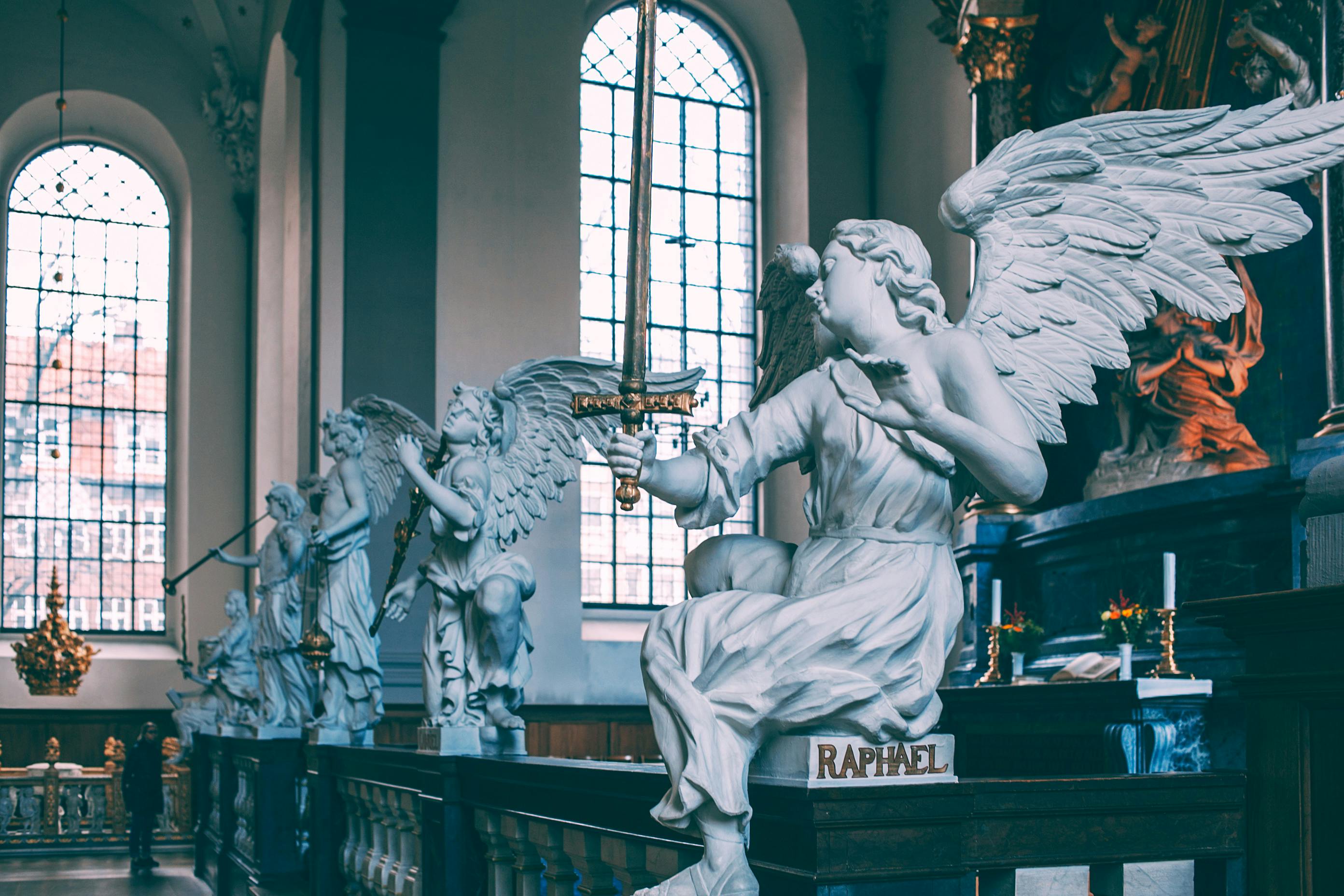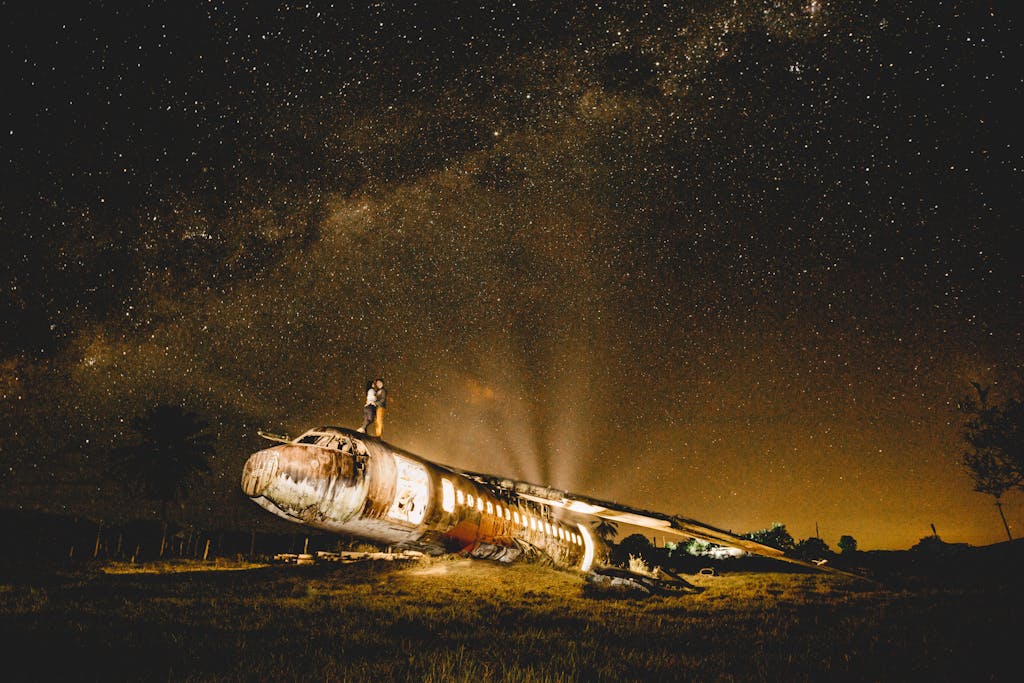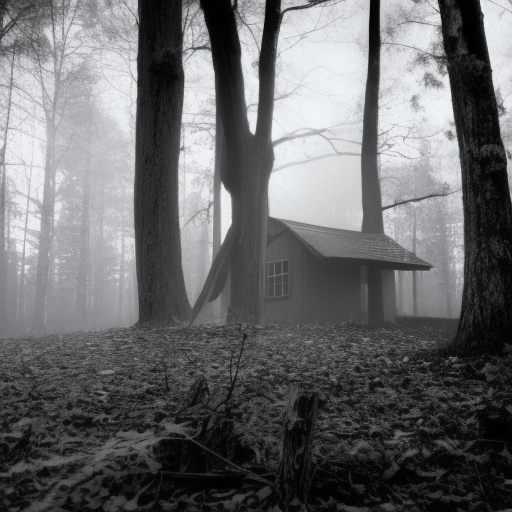The Angel of the Future (Original Fiction Article) [EN-ES]
In May 2007, a peculiar writing was found, specifically from the 16th century, with a description of an encounter with a person who did not seem to be from that time.

Foto de Maria Orlova en Pexels
In Sarmena there is a church that is now more of a ruined monument. Sarmena was a not very large community that in 1566 (although it is not known if this is the correct date) suffered the consequences of an earthquake destroying almost the entire village. Most of its inhabitants decided to abandon it after the plague and a previous earthquake were seen as bad signs.
The finding of the Peculiar writing in Sarmena
In 2007, a group of researchers went to the area with the intention of detailing the population that once lived there. In the church, they found the peculiar writing among 3 others. Sarmena had been abandoned after catastrophic events occurred.
Mario Stefano, journalist and the researcher in charge, commented that the finding was important for the team but not of such relevance. They had hoped to find some details of the life of the community in the writings although they assumed it would be difficult to do so.
The angel of the future
On one of the manuscript leaves, differently adorned and rather better preserved, there is a description of the contact the group of religious had with an angel.
What is striking is the description they gave: "the angel shone like the sun, two small stars followed him on his head which was covered by a metallic hood. His garment was white and pure as only an angel of god could wear and covered him completely. On his back, a bulge where his wings were to be hidden covered."
The writing describes the interaction between them and the supposed angel: "removing his hood we saw that he was in the image and likeness of our lord. His eyes black and radiant. His hair almost white. He said to fear nothing but what was coming. The future was clear to him because he could see any weather. And he warned us of what would happen in the next year and so we heeded."
The departure was described thus, "after the revelation he took out the book of the world and of time and touched it gently. Then his body was seen to glow and his figure seemed like hot air. Then he was no more but with the God of creation."
Mario Stefano gives an interpretation to the story in his 2010 book, "The Book of Time: The Angel of Sarmena." According to him, the supposed angel was nothing more than a time traveler. He surmises this because of the unique description that in the peculiar writing the religious give to the encounter. "It is not the typical encounter that in many religious writings we can see. I compared it with several religious accounts and I find it very special," says the author.
Whether it is a true sample of intertemporal travel or a story to convince the population to leave the village, what cannot be denied is that the case is interesting.
En mayo del 2007, se encontró un peculiar escrito, específicamente del siglo XVI, con una descripción de un encuentro con una persona que parecía no ser de esa época.
En Sarmena se encuentra una iglesia que en la actualidad es más un monumento en ruinas. Sarmena era una comunidad no muy grande que en 1566 (aunque no se sabe si es la fecha correcta) sufrió las consecuencias de un terremoto destruyendo casi toda la villa. La mayoría de sus habitantes decidieron abandonarla luego de que la peste y un anterior terremoto fueran vistos como malas señales.
Un hallazgo del Peculiar escrito en Sarmena
En 2007, un grupo de investigadores fueron a la zona con la intención de detallar la población que vivió alguna vez allí. En la iglesia, hallaron el peculiar escrito entre 3 otros. Sarmena había sido abandonado luego de eventos catastróficos ocurridos.
Mario Stefano, periodista y el investigador encargado, comentó que el hallazgo fue importante para el equipo pero no de tanta relevancia. Esperaban encontrar algunos detalles de la vida de la comunidad en los escritos aunque supusieron que sería difícil que fuese así.
El ángel del futuro
En una de las hojas de los manuscritos, adornada diferente y bastante mejor conservada, hay una descripción del contacto que tuvo el grupo de religiosos con un ángel.
Lo que llama la atención es la descripción que dieron: «el ángel brillaba como el sol, dos pequeñas estrellas le seguían sobre su cabeza que estaba cubierta por una capucha metálica. Su vestimenta era blanca y pura como solo un ángel de dios podría llevar y lo cubría completo. A su espalda, un bulto donde sus alas debían ocultarse recubiertas.»
El escrito describe la interacción entre ellos y el supuesto ángel:«removiendo su capucha vimos que era a imagen y semejanza de nuestro señor. Sus ojos negros y radiantes. Sus cabellos casi blancos. Dijo que no temiéramos más que a lo que se avecinaba. El futuro era claro para el porque podía ver cualquier tiempo. Y nos advirtió de lo que pasaría en el siguiente año y así hicimos caso.»
La partida fue descrita así: «luego de la revelación sacó el libro del mundo y del tiempo y lo tocó suavemente. Entonces, su cuerpo se vio brillar y su figura parecía aire caliente. Luego ya no estaba más que con el Dios de la creación.»
Mario Stefano da una interpretación al relato en su libro del 2010, «El libro del tiempo: El ángel de Sarmena». Según él, el supuesto ángel no era más que un viajero del tiempo. Lo supone a causa de la singular descripción que en el peculiar escrito dan los religiosos al encuentro. «No es el típico encuentro que en muchos escritos religiosos podemos ver. Lo comparé con varios relatos religiosos y me resulta muy especial», dice el autor.
Ya sea una verdadera muestra de viaje intertemporal o una historia para convencer a la población para abandonar la villa, lo que no se puede negar es que el caso es interesante.










Comments